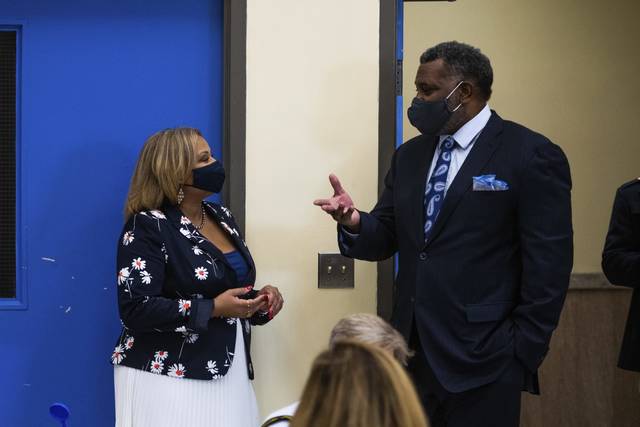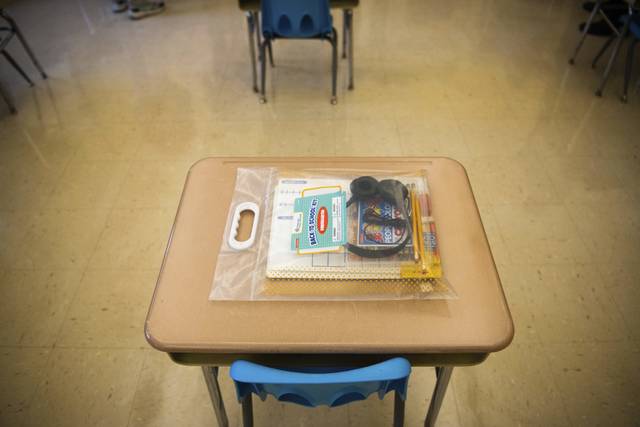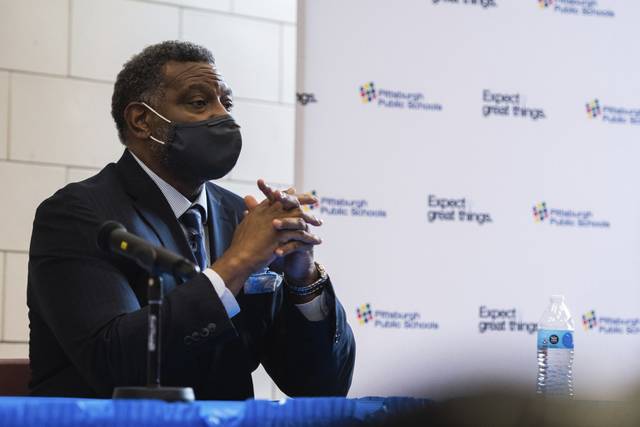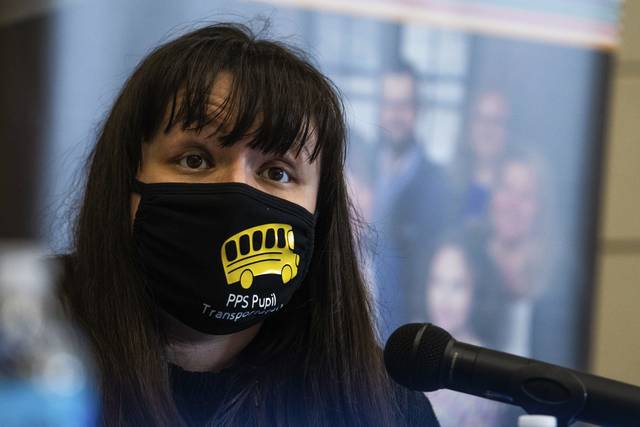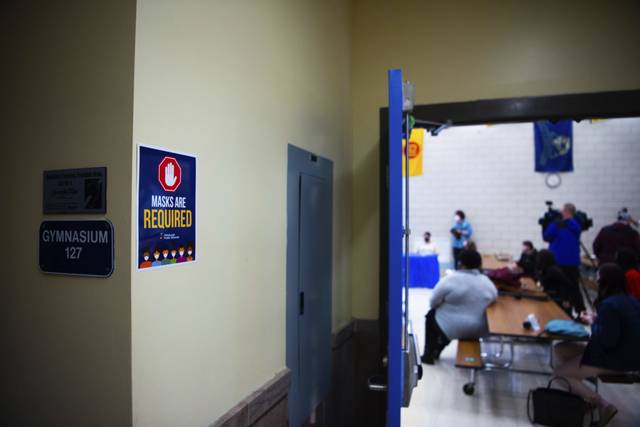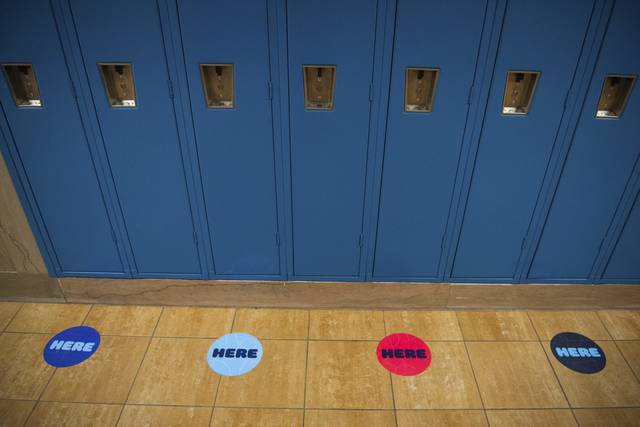Pittsburgh Public Schools prepare for students' return to in-person classes
Her kindergarteners used to sit at tables, in groups. But now there are tiny disks spread across Amy Belitz’s classroom at Lincoln PreK-5, each about three feet apart from each other.
Last year, Belitz said, her classroom seated 24 kids. Now there are only nine desks, and there will be no more than six students in her room at a time.
Capacity limits and physical distancing are among the new measures put in place across the Pittsburgh Public Schools, as the district prepares to bring students back to buildings after spring break.
The district will begin its phased reopening Tuesday, April 6, starting with students who have struggled the most with remote learning, as well as kindergarten and Pre-K students. Most will be attending through a hybrid model, in which some students attend Mondays and Tuesdays, others on Thursdays and Fridays.
“I teach kindergarten. They have never been in the building before,” said Belitz, who has been teaching for 23 years at Lincoln, located in the Larimer neighborhood. She explained that while she teaches five or six students in person (depending on the day of the week), she will simultaneously work with the rest of her class who are remote.
“It’s going to be challenging, but I think we’ve got it,” she said. “The kids are prepared.”
The district is completing its effort to vaccinate all teachers and staff — through a partnership with Giant Eagle and through Gov. Tom Wolf’s statewide initiative. Just under 2,000 teachers and staff were inoculated at Pittsburgh Obama Academy in the span of four days, said Linda M. Baehr, of the Pittsburgh-Mount Oliver Intermediate Unit, at a school board meeting last week. Baehr said the clinics worked efficiently, vaccinating six individuals every five minutes.
Assistant Superintendent Rodney Necciai said at a news conference Friday that another 1,500 were vaccinated at Heinz Field through a partnership with Giant Eagle, and people are still “trickling in.” Many of the district’s clinical staff were inoculated during the state’s original Phase 1A, and more may have gotten vaccinated through means outside the district, he said.
“We believe that the overwhelming majority of our staff will be vaccinated and everybody that wanted to be vaccinated had an opportunity to do so through us,” Necciai said.
But the vaccinations are only one measure of protection. All students — including the youngest kids — will be required to wear masks all day except for during lunch. Parents will be asked to conduct daily screenings on their children before sending them into buildings, watching for fevers or other covid symptoms. Buses will operate with more cleaning and sanitation and with two students to a seat rather than three for elementary schools, said Megan Patton, director of pupil transportation. Hamlet said that in some buildings, including Lincoln, additional air filters and ventilation have been installed.
In classrooms like William Cary Allen’s, where Lincoln students learn science, technology, engineering, arts and math (STEAM), each student will receive their own box of supplies – no more sharing among each other. His classroom will also have reduced capacity. Normally filled with between 14 and 19 students, the room will have about half that amount in-person through the hybrid model.
Allen’s class focuses heavily on hands-on practice and modeling, using tools like Legos for building and engineering lessons – which can be a challenge for students who are remote.
“Students who are not here in this space, virtually, it’s going to be difficult for them. They of course can’t do some of the hands-on activities. But fortunately for us, we have some creative ways of giving them opportunities to teach the same skills,” Allen said, like having students use their own household items, for example.
Superintendent Anthony Hamlet said Friday one of the main goals of bringing students back this year is to help them become reacquainted with the classroom, offer interventions and get a jump-start for next fall.
The challenges of virtual learning will likely last for years to come, Hamlet said, even after all students are back in the classroom. This will not be a “one and done” year, he quipped. The district is planning to offer an extended summer school, which will accept up to 5,000 students to help them make up for instructional loss in the last year of remote learning.
“We’re definitely thinking bigger, larger, more students,” Hamlet said. “One thing we’re doing as well is looking at the curriculum, understanding our students have not been in school, have not been around each other in a while. We want to make this not ‘drill and kill’ … but also address the social and emotional needs of our students as well.”
Surveys will be administered once students are in classrooms again, Hamlet said, to assess the emotional toll of the pandemic. Hamlet said the district is making plans for additional supports like after-school programming, tutoring and other opportunities.
“When this pandemic supposedly ends, the effects of that on our community and our children will go years down the road,” Hamlet said.
Remove the ads from your TribLIVE reading experience but still support the journalists who create the content with TribLIVE Ad-Free.

